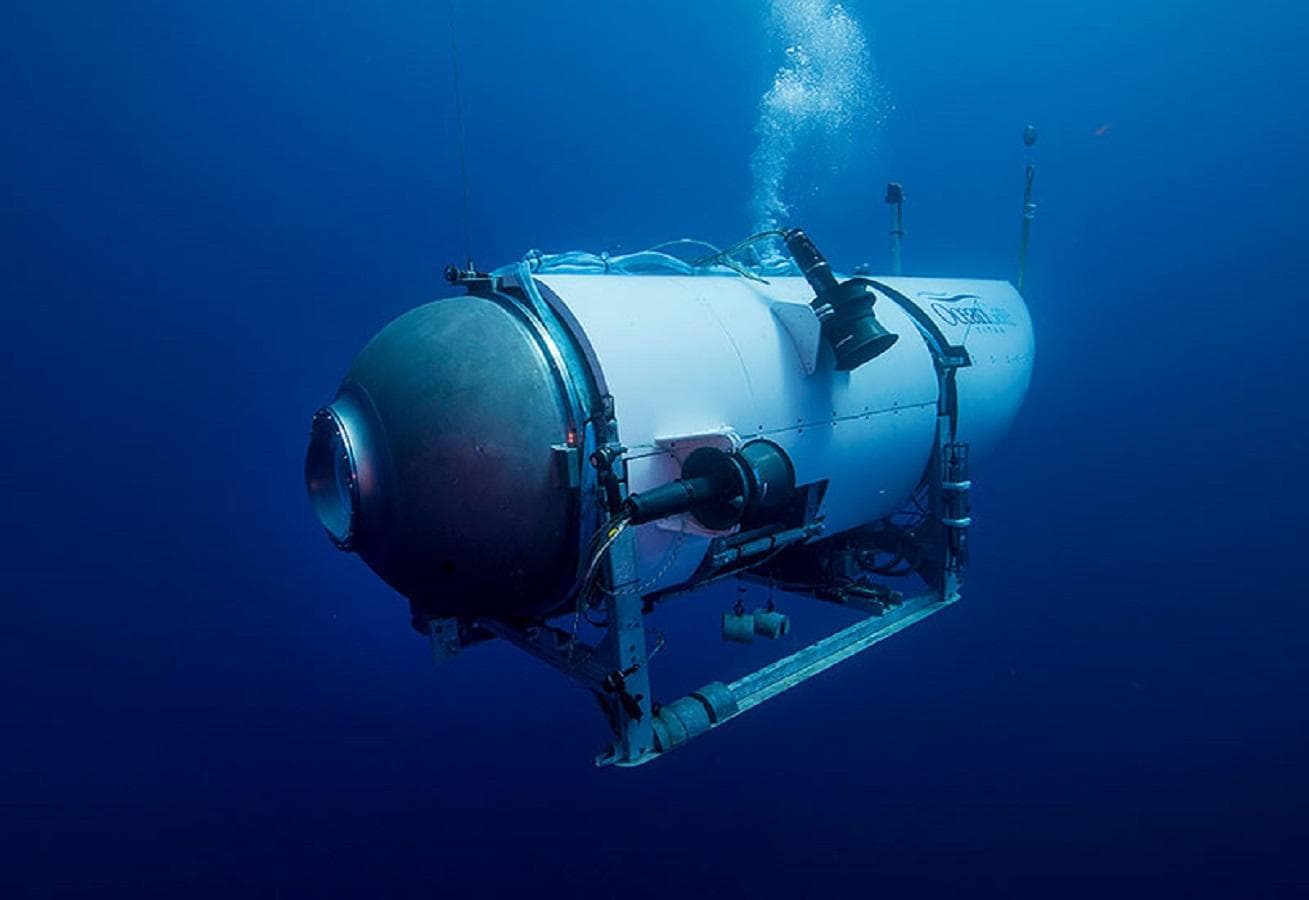Underwater worlds surely appear like wonderscapes — boundless blue expanses dotted with colourful oceanic flora and fauna, muted sounds, and a feeling that everything has slowed down around you to a languid drift. Add to this a shipwreck and you might as well be travelling in a time-capsule!
This is what the tourists travelling in OceanGate’s Titan submersible must have also been looking forward to when they boarded the vessel. The submersible lost contact with the surface ship an hour and 45 minutes after it started to dive on Sunday, the U.S. Coast Guard said. Nearly 72 hours have passed since then.
The titan is a 22-foot carbon-fiber and titanium craft, deployed by the Canadian expedition ship M.V. Polar Prince, to travel nearly 13,000 feet down to the shipwreck site of the Titanic, on the ocean floor off Newfoundland. Claimed to be the only crewed submersible in the world that can take five people as deep as 4,000 meters, the Titan has taken people on tours of the Titanic site since 2021, and guests have paid OceanGate $250,000 for each such trip.
What are the OceanGate expeditions about?
OceanGate organizes expeditions that can last up to nine days for tourists who are willing to pay hefty prices to travel to shipwrecks and underwater canyons. According to the company’s website, OceanGate also provides crewed submersibles for continuous surveys to inspect underwater infrastructure, wrecks, or sensitive environmental habitats without resurfacing. Its submersibles have been used in scientific research, oceanic surveys, and film and media productions, as well.
OceanGate’s tourist expeditions are fairly new though and began only in 2021; the company was founded in 2009 by US aerospace engineer and pilot, Stockton Rush. Rush is one of the 5 occupants of the missing submersible.
What is the major wreck-diving spots in the world?
Wreck-diving is emerging as a fast-growing segment of the global underwater diving tourism market, which was valued at $3.93 blllion in 2022. The market is expected to grow at a CAGR of 8.4 per cent, to reach a valuation of $5.2 billion by the end of 2028, between 2023-2028, according to a report by Market Data Forecast.
While OceanGate’s Titanic expedition is fairly new, there are numerous other sites that offer divers a unique opportunity to experience the ocean as a museum.
There’s the SS Thistlegorm, Sharm-El-Sheik, Egypt, often hailed as one of the best wrecks dives in the world. it’s accessible by both dive safari and day trips from Sharm El-Sheikh. This 420-foot (128-meter) British transport ship was sunk in 1941 following a German air attack. At advanced recreational depths, the Thistlegorm is a fantastic glimpse into history. Divers can still view the ship’s cargo, including tanks, trucks, jeeps, motorcycles, and even a locomotive.
But one of the most accessible wrecks is the USAT Liberty, with its upper section just 10 feet (3 meters) underwater. The ship was originally an American warship. It survived WWI only to be sent into WWII. In 1942, it was torpedoed by the Japanese off the coast of Bali. The captain beached the ship, and it sat rusting above the water for 30 years. In 1963, a volcanic eruption shifted the ship into the shallow waters just offshore.
Then there is SS President Coolidge. Originally built as a luxury cruise liner, it became a troopship during World War II. In 1942, she was struck by friendly mines after the captain failed to receive information about a safe passage to the harbour. Today, the ship sits between 65 and 230 feet (20 and 70 meters) and is a nationally protected dive site. Scuba divers in Vanuatu can explore the various decks and holds, finding guns, cannons, trucks, and “The Lady,” an Elizabethan statue that sits above the fireplace in the ship’s central dining hall.
Other popular dive wreck sites include, the Fujikawa Maru stranded 30 feet (9 meters) below the surface in the Chuuk Lagoon at the Federated States of Micronesia, the Hilma Hooker at Bonaire, the Caribbean Netherlands, and the Gunilda, a luxury steam yacht billed as the most opulent boat at the turn of the 20th Century, sunk near Rossport, Canada.
What are the different approaches to wreck diving?
Non-Penetration Diving: This is the least risky type of wreck diving. Generally, divers descend, circle the wreck and work their way back to the surface.
Limited Penetration: Here, divers can penetrate the wreck so long as an exit point is still visible, and a minimum of natural light exists.
Full Penetration: With the greatest risks, full penetration allows scuba divers to enter the wreck past the light zone and without the ability to escape in an out-of-air situation.
Is wreck-diving dangerous?
The most common risk in wreck diving is entanglement. This can occur in non-penetration wreck diving — where the tourists circumnavigate the wreck and do not enter the remains — as fishermen’s nets and lines often become ensnared on ship structures. A reliable dive knife can go a long way in solving this issue.
Another common risk is that of silt-out. In a limited penetration situation, a silt-out can become dangerous if the nearby exit is blocked from view. Limited visibility causes confusion and often divers will progress further into the wreck accidentally.
Note:- (Not all news on the site expresses the point of view of the site, but we transmit this news automatically and translate it through programmatic technology on the site and not from a human editor. The content is auto-generated from a syndicated feed.))



